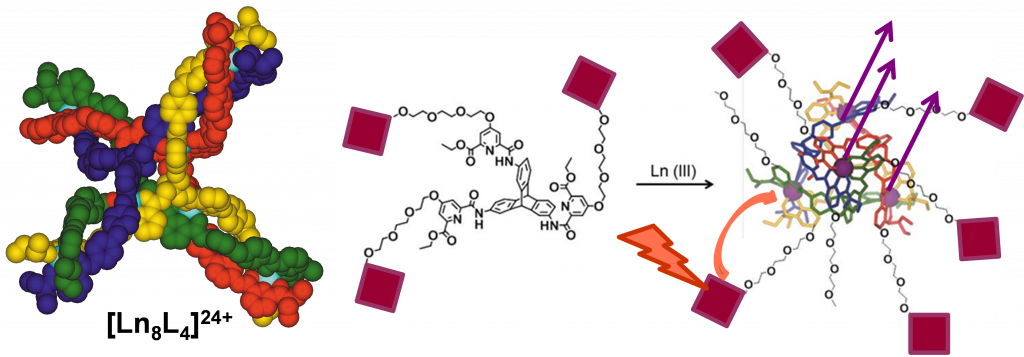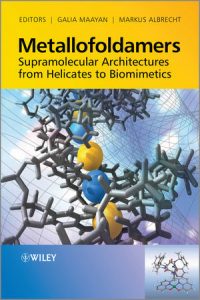Polynuclear compounds with lanthanides can be advantageously prepared using a supramolecular synthetic approach. The preparation of self-assembled stable systems, where many factors must be taken into account, is not an easy task. In this context, an effort has been made in the design and synthesis of suitable ligands to provide and characterize precursors (polytopic ligands and their complexes) for different applications. Detailed thermodynamic speciation studies of supramolecular complexes with different lanthanide cations are carried out by NMR and different spectroscopic methods (see for instance Inorg. Chem. 2017, 56(5), 2742-2749). Between the most important achievements we can highlight the self-assembly of octanuclear helicates Ln8L4 (Chem. Eur. J. 2015, 21, 6695-6699).

The majority of our ligands are so-called “tripods” (tripodal ligands), which can form, in principle, Ln(III) complexes of different structure and nuclearity. Recently, we have published a review article about this subject in the European Journal of Inorganic Chemistry (Eur. J. Inorg. Chem. 2018 (10), 1155-1166), and our article was selected for the front page figure, as you can see below. 
The thermodynamic principles of self-assemblies with lanthanides have been discussed in details in the book “Metallofoldamers : Supramolecular Architectures from Helicates to Biomimetics” (Eds. : Albrecht M. and, Maayan G., Wiley 2013) in Chapter 3.

Here you can find our recent work on small tripodal lanthanide complexes, where only one cation is complexed by the ligand: Eur. J. Inorg. Chem. 2021, XXX.

